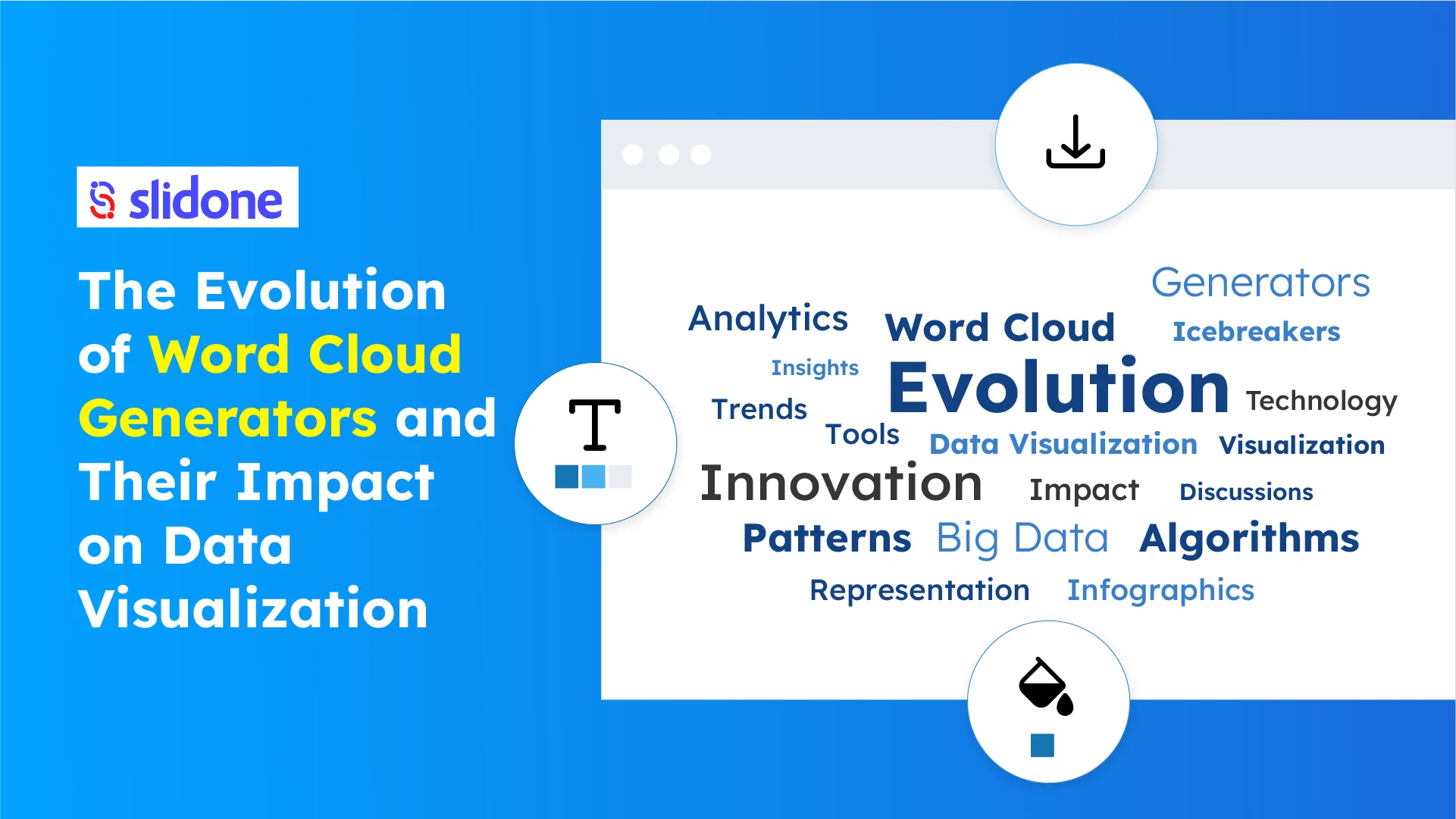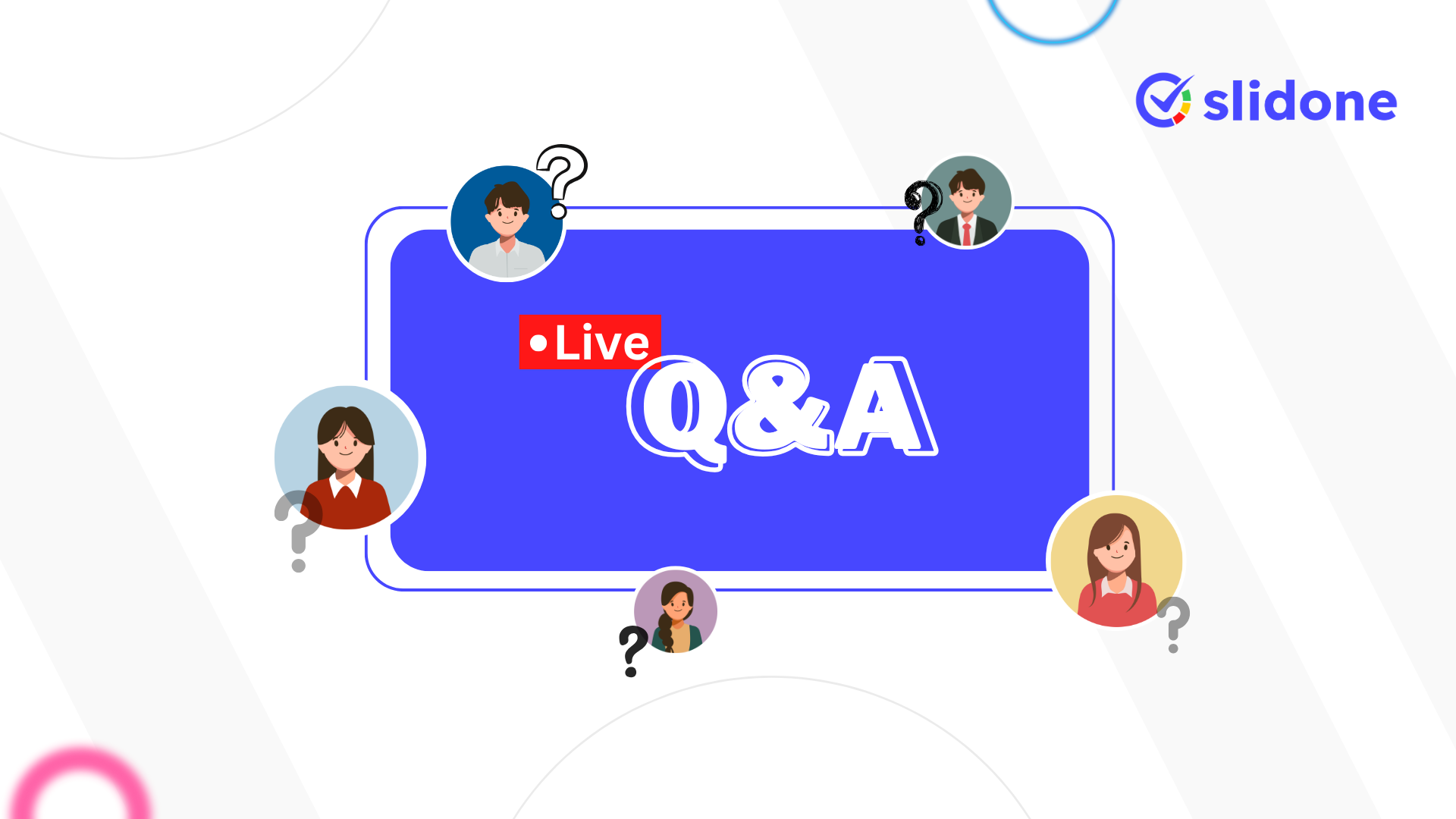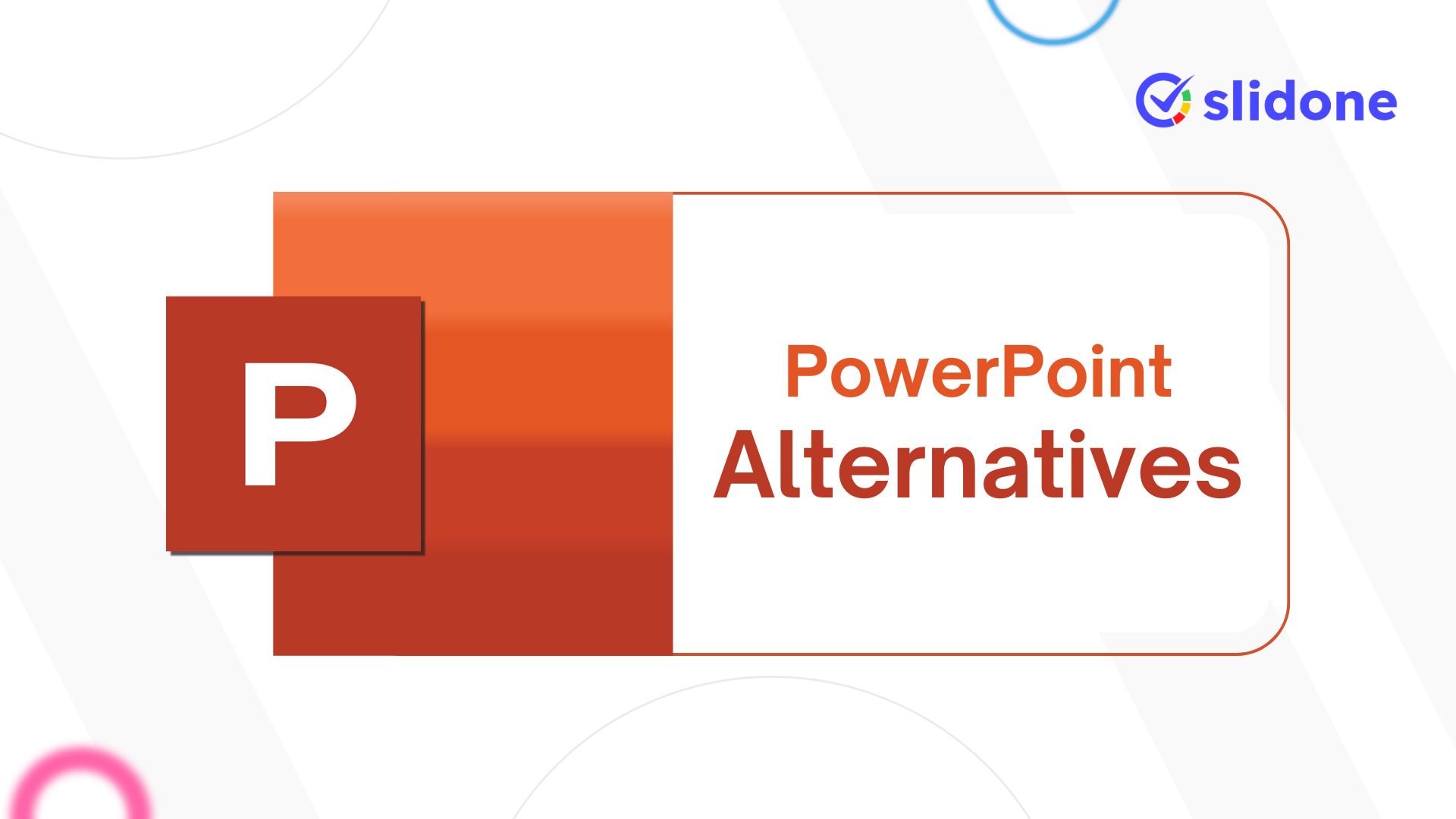Word clouds are a popular and visually appealing way to show text data. Word cloud generators have become more advanced over time, turning from simple tools into powerful data visualization instruments. These tools take words from a piece of text and display them in a cloud-like shape, with more frequent words appearing larger.
Modern word cloud generators offer various features, such as customizable fonts, colors, and shapes, which make the clouds more engaging and meaningful. They help in highlighting key themes and trends in a text, making complex information easier to understand at a glance.
This blog explores how word cloud generators have developed, what features they now offer, and how they have changed the way we visualize data. By making text data visually striking and easy to grasp, word clouds have become an important tool for presentations, helping to engage and inform audiences effectively.
What Is a Word Cloud?
A word cloud, or tag cloud, is a picture that shows text data where the size of each word shows how often it appears or how important it is in the text. Bigger words appear more frequently, while smaller words appear less often. Word clouds are a great way to highlight main ideas or themes in a fun and easy-to-understand way. They make it simple to see which words are most important or commonly used. This visual tool is helpful for quickly understanding the main points in a large amount of text. It can be used in presentations, reports, or any setting where you need to show key themes or concepts clearly and attractively.
Early Word Cloud Generators
Basic Tools
In the early 2000s, word cloud generators were very simple. They did not have many options for customization. Users could only choose from basic fonts and shapes. These tools let people enter text and get a basic picture showing how often each word appeared. The word clouds were straightforward, with no special features or designs. People used them to see which words were used the most in a block of text. Even though the word clouds were plain, they were useful for quickly understanding the main ideas in a piece of writing. Over time, these tools have become more advanced, offering many more options and features for creating interesting and unique word clouds.
Limitations
- Limited Customization: Users could not adjust font styles, colors, or layouts extensively.
- Basic Functionality: The primary function was to display word frequency without advanced features for data analysis.
The Rise of Advanced Word Cloud Generators
Enhanced Features
As technology improved, word cloud generators offered more features. Users could now customize fonts, colors, and layouts. They could also use custom shapes and designs, creating more unique and personalized word clouds. Advanced tools allowed integration with data sources like spreadsheets and databases. This made it easier to visualize complex information. These enhancements transformed word clouds into powerful tools for presenting data in a clear and engaging way. Whether for business reports, educational materials, or creative projects, the new features enabled users to create word clouds that were not only visually appealing but also highly informative. This evolution expanded the usefulness of word clouds in various fields.
Popular Advanced Tools
Slidone’s word cloud generator is a powerful tool for creating word clouds. It offers many customization options and numerous built-in templates. You can easily create unique word clouds and share them with your audience. This feature helps you engage your audience better and make your presentations more interactive and visually appealing. With Slidone, you have everything you need to create stunning word clouds quickly and efficiently. Whether for business meetings, educational purposes, or creative projects, Slidone word cloud generator makes it simple to capture and maintain your audience’s attention.
The Impact of Word Cloud Generators on Data Visualization
Enhancing Data Understanding
Simplified Data Representation
Word clouds turn complex text into clear visuals, helping users spot important themes and patterns. They show which words appear most often, making it easy to understand key topics and trends in large amounts of data. By highlighting frequently used words, word clouds simplify the task of identifying main ideas and significant details. This visual tool helps users quickly grasp the essence of the information, providing a straightforward way to see what’s most important without getting lost in lengthy text.
Improved Communication
Visual tools like word clouds turn raw data into clear, easy-to-understand information. They give a quick visual summary, making complex data more accessible. By showing the most frequent words in a visually engaging way, word clouds help everyone, regardless of their expertise, grasp key points quickly. This makes it easier for audiences to understand and remember the main ideas without having to dig through detailed data. Word clouds simplify the communication of information, helping ensure your message is clear and impactful.
Applications in Different Fields
Business
In business, word clouds are valuable tools for examining customer feedback, survey responses, and market research. They make it easy to spot recurring themes and sentiments in data, helping businesses understand what their customers are saying. By visualizing frequently mentioned words, word clouds provide clear insights that can guide decision-making and shape business strategies. This method helps companies quickly identify key trends and areas of concern, leading to more informed and effective decisions. Using word clouds can enhance how businesses interpret data and develop strategies based on real customer insights.
Education
Educators often use word clouds to emphasize important ideas in their lectures, summarize feedback from students, and review text-based assignments. Word clouds are great for visualizing what students think and understand. By showing which words or phrases are most common, teachers can quickly see what topics are most important or where students might need more help. This tool helps make student input and engagement clearer, making it easier for teachers to adjust their lessons to better meet students’ needs.
Media and Marketing
Media professionals and marketers use word clouds to monitor brand mentions, analyze social media trends, and evaluate the success of their campaigns. Word clouds provide a clear, visual summary of how the public perceives a brand and highlight current popular topics. By showing which words appear most frequently, they help professionals quickly grasp key trends and sentiments. This tool is valuable for understanding audience reactions and making informed decisions based on real-time data.
Benefits and Limitations
Benefits
- Visual Appeal: Word clouds are visually engaging and can make data more interesting.
- Ease of Use: Many word cloud generators are user-friendly and require minimal technical expertise.
- Quick Insights: They provide immediate insights into the most frequent terms and themes in a dataset.
Limitations
- Over-Simplification: While word clouds are effective for high-level summaries, they may not capture nuanced details or relationships within the data.
- Subjectivity: The size of words in a cloud can be misleading if not properly interpreted, as it reflects frequency but not necessarily importance or relevance.
Read More: To Know About 10 Creative Ways To Use Word Cloud In Presentations
Future Trends in Word Cloud Generators
Integration with Advanced Analytics
AI and Machine Learning
Future word cloud generators are likely to incorporate artificial intelligence and machine learning to provide deeper insights. AI can enhance text analysis by detecting sentiment, context, and trends more accurately.
Enhanced Interactivity
Expect more interactive features, such as the ability to drill down into specific words or topics to view related data and insights. These enhancements will make word clouds more dynamic and informative.
Broader Applications
Real-Time Monitoring
Real-time word cloud generation will become more common, allowing users to visualize data as it changes. This will be useful for monitoring live feedback, social media trends, and ongoing research.
Customization and Personalization
Future tools will offer even more customization options, including advanced design features and personalized visualizations tailored to specific user needs.
Conclusion
Word cloud generators have come a long way from basic tools to sophisticated data visualization platforms. This evolution has transformed how we analyze and display textual information. Today’s advanced word cloud generators provide a variety of features that improve our understanding of data and enhance communication. These tools are now essential in many areas, offering more effective ways to present and interpret text-based information. Their ability to visually highlight key terms and themes makes them valuable in fields such as marketing, education, and research.





Leave a Comment
Your email address will not be published. Required fields are marked *